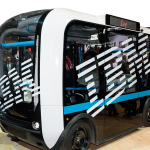How SEGA leverages in-game data to keep players coming back

Attracting 2.5 billion individuals (and counting) seeking brief escapism, a virtual challenge, and even community spirit, the constantly-evolving gaming industry is at a cultural pinnacle.
Tipped to generate US$196 billion in revenue by 2022, the market remains massively lucrative.
In 2018, Fortnite smashed earnings records generating US$2.4 billion, while it’s not unusual for long-awaited titles, such as Red Dead Redemption 2, to rake in half a billion in their launch quarter.
That continuous popularity, year after year, is perpetuated by constant innovation— in technology, artistic creation, and in business.
Gamers now enjoy photo-realistic graphics and lightning-fast rendering; original orchestral scores and Oscar-worthy story-telling; and subscription and distribution models that give them access to online play and title downloads at a whim.
At the heart of game developers’ endeavors is the objective to keep players coming back to their creations long after the first play-through. Games take blood, sweat, tears and a lot of money to make— ensuring customers remain followers is crucial.
If there’s one company that’s proving it can acheive this, it’s SEGA.
Beginning as a creator of coin-operated arcade games in the 60s, the now Tokyo-headquartered firm went on to create consoles, including the Genesis which found major success with the release of Sonic the Hedgehog in 1991. At the turn of the millennium, the firm traded hardware for games development and publishing.
While arcade gaming remains in its bloodline, today it’s better known for multi-million-selling franchises including Total War and Football Manager.
At the root of SEGA’s longevity is ensuring that, when its customers enter its games, they are having the best possible experience, both today, and when they return to a title next year.
To achieve this, the games developer is increasingly leveraging in-game data to draw insights on how its players are interacting with their virtual worlds, and how this information can be acted on to continually enhance the gaming experience.
Stanley Wang is a Data Scientist at SEGA Europe. Speaking ahead of Big Data LDN last week, he told TechHQ that as a life-long fan of the Total War series, it was a dream come true when he was invited to join the team to apply his data skills.
“There’s a huge revolution going on in data at the moment and many companies, SEGA included, are collecting a wide variety of data about their product, about their fanbase.
“We thought they’d been very good about what had happened in the past. But there’d been fewer questions about how that past informs our future,” Wang said.
“We’re all part of this data revolution here— it’s a great thing to be part of, but everyone has the responsibility to use the data in a way that will enhance the lives and the experiences of the community around us.”
YOU MIGHT LIKE

Five tips from IBM’s CDO on how to make an early impact
SEGA doesn’t just have one community, however, it has hundreds of active titles to its name across several studios, and its aim with data is to ensure none of those games’ followings are neglected as all are ultimately valuable to the company now and in the future.
Wang’s data team currently comprises of six, including a data developer, data architect, three backend developers to create its data platform and himself, a data scientist.
Data comes in two raw types; the first is monthly sales insights data from Steam— a digital distribution platform that hosts millions of concurrent users, where SEGA games are available to download.
But the second is data from in-game player activity. Wang and his team work with SEGA’s developer studios to add in-game events into the products, which allow insights and analysis to be drawn on how players play the game, ultimately shedding light on aspects of the game that can be improved on.
“With this data, we get about 5,000 events per second,” Wang told us.
Most recently, SEGA’s data science team has been working closely with the recently-acquired Two Point Studios on a hospital simulation strategy game entitled Two Point Hospital. The team can analyze a “wealth” of in-game events, including how much money each player’s hospitals are making, their in-game reputation, to even finer details such as what kind of furniture they like to buy for their waiting rooms.

A gameplay screenshot from SEGA title Two Point Hospital. Source: SEGA Europe
All this fine and granular insight help SEGA’s developer teams continually craft and update experiences that surpass user expectations.
“We can take this data to analyze clusters of player behavior and understand what the main groups of play styles are on the game,” Wang said.
“This has been a huge success, and it’s great for us and it helps us to make improvements to the game in the future and better content for the game that the community actually wants.”
While this forms the basis for in-game insights, the data team explore all sources available to them to better understand their users, across each unique community, and what keeps them coming back. That can include using machine learning to scour games reviews for keywords to analyze the sentiment the game is evoking.
Collecting the data is one element of the role, but SEGA’s data science team must also work closely with other teams around the business to deliver it in a way that is “intuitive and visual” for various analysts.
YOU MIGHT LIKE

Can we take data management tips from England football?
Communicating the value of data insights is not only crucial to the development of SEGA’s portfolio. As data becomes the lifeblood of modern industry, it’s a skill that data specialists from all industries must hone in order to ensure their companies leverage the full advantage of their findings.
The end-goal is to not only analyze what has happened in the past to help them extract more value from and better understand SEGA’s players in order to inform future decision-making processes across its various communities.
“The biggest aspect of my job is to communicate the number of applications that data science and machine learning have,” Wang said.
“I want to encourage a more inquisitive mindset and approach to the data, so instead of just asking what happened to this product a year ago, we should always be asking what more can I learn from the data, and from that, how can we predict how a product will do, in say, a year from now.”
Wang said there was no set pattern to his workday at SEGA; the data team works with all teams in the business and endeavors to serve ad hoc requests, whatever they may be—and that’s what makes the job so exciting.
“You go into work and you never really know what you’re working on that day.
“I think of data science and machine learning at first of building a toolbox of techniques and applications that will help you for any scenario.”









